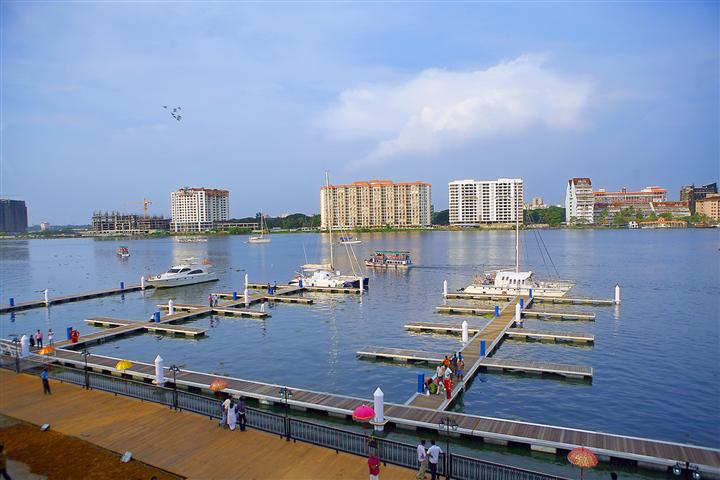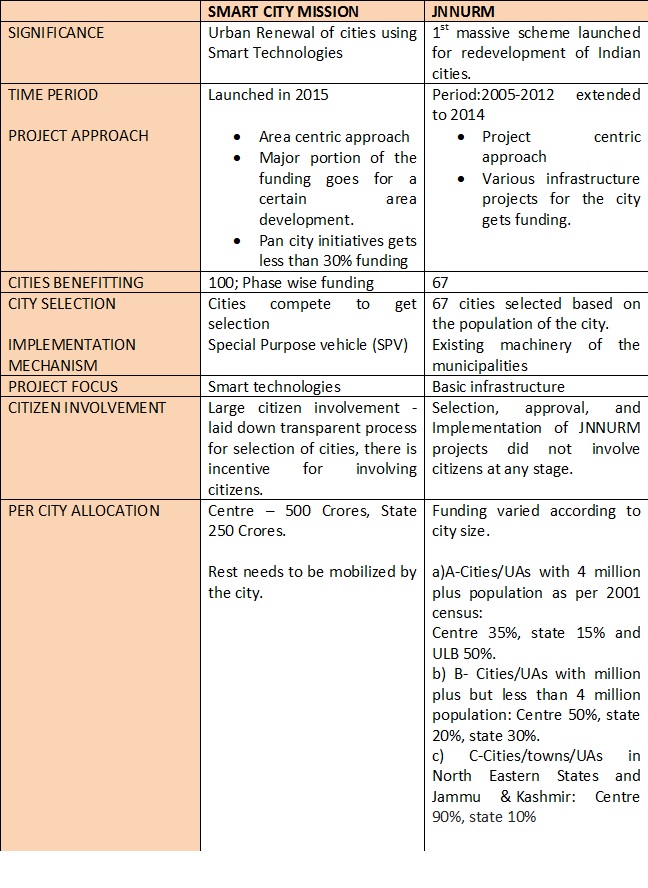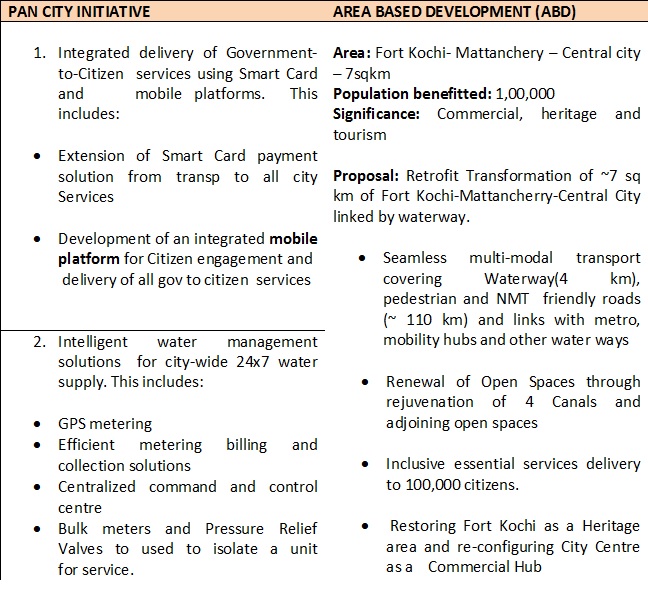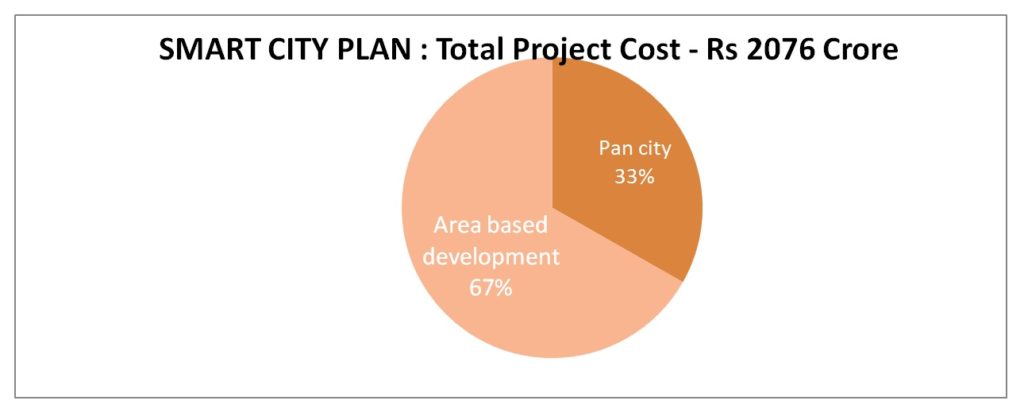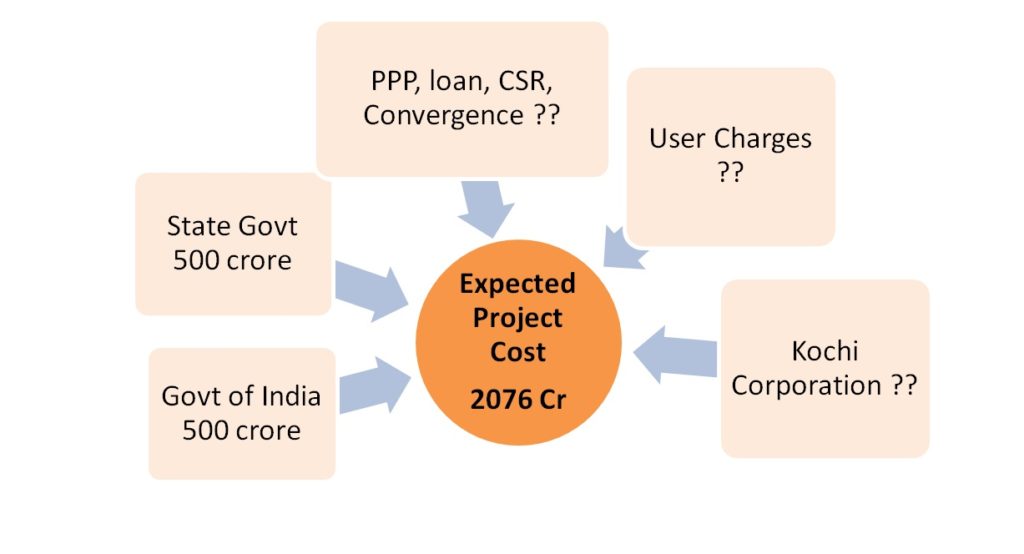This article is about the Smart city mission launched by Government of India in 2015 and not Kerala government’s Smart city IT Park in Kakkanad.
‘Cities have the capability of providing something for everybody, only because, and only when, they are created by everybody’ – Jane Jacobs
Urban Development in India:
Government of India (GOI) launched its first massive urban development program in 2005 named Jawaharlal Nehru National Urban renewal mission (JNNURM). It was the first ever massive scheme launched for redevelopment of Indian cities post independence. By then cities were identified as the engines of economic growth – main contributors to GDP – and it was realized that to keep up their productivity, huge investments are required to enhance the quality of life via urban infrastructure. JNNURM ended in 2014 and the next urban development program – SMART CITY MISSION -was launched by the BJP government in 2015.
Smart city mission differs from its previous counterpart by its very approach to urban development. While JNNURM focused on providing basic infrastructure to cities, Smart city focuses on an area in the city and providing smart technologies to it. This means the majority of the funding goes to a small area in the city and the entire city is not treated equally!
The mission has 2 components:
- Area based development – An area in the city is chosen to be made ‘smart’. This area is then provided with all the Smart technologies. Area for development can be chosen 3 ways – a)redevelopment of the existing area or b) retrofitting (new plug in’s to existing area) or c) choosing a vacant area and developing it. More than 60% of the project cost goes into this area.
- Pan City Initiative – This aims at providing smart solutions to the existing city wide infrastructure and every city should have at least 1 such proposal.
Smart, Non Inclusive, Skewed?
While the Smart city mission was launched with a huge hype, the mission is not really what the Indian cities want!
- Skewed development model – Smart city flaws in its very approach to urban development. From the very look of the mission document, it can be said that it is not a smart city mission; rather a mission to make a small area in the city smart. The approach for development is area centric. If you see the top 20 cities’ proposals, all the cities have spent more than 65% of their total project cost on this one area in the city. The pan city initiative gets less than 30% of the total funding. This is a skewed model of development.
- Over emphasis on Smartness – In the proposals of the top 20 selected cities, a large number of them have chosen e-governance and intelligent city operations as their Pan city initiative. Its no surprise as the mission document gives high emphasis on smartness and thereby smart technologies. Every city has tried to, in fact, was forced to adopt some sort of IT technologies in their proposals. For eg; In solid waste management proposals, cities have introduced weight sensory bins, GPS monitoring and tracking of vehicles etc (Jabalpur, Jaipur, Indore) and there is no mention of how this waste is to be disposed off. Do Indian cities really require weight sensor dust bins which costs around 3-4 lakhs per bin?? By giving over emphasis on Smartness, GOI is forcing the cities to adopt technologies which are not required in their cities and spend exorbitant money on them. Cities are forcefully adopting these not to be left out from the funding and to be included in the mission. This will benefit the IT companies more than the cities (maybe that’s what the Modi government wants!)
- SPV – The mission demands creation of a Special Purpose Vehicle (SPV), a private body, to run the smart city mission. The SPV will have complete control over planning, implementation, operation of the Plan. This is like creating a parallel body to Corporation who would run a certain part of the city. The SPV would be headed by a CEO to be appointed by the governing body of the SPV, who would be a private person and not an elected representative. This negates the 74th Constitutional amendment.
Kochi Smart City Plan
Kochi is ranked 5th in the top 20 list of smart cities. This makes eligible for it to receive Rs 200 Cr (first installment out of Rs 500 Cr). The state government has allocated 500Cr in the budget for the mission.
Kochi Smart city plan proposals can be summarized as below:
Also, there is no mention of the future of SPV, will it be dissolved after 5 years or will it run parallel to corporation?
Even though the mission tries to attain only ‘smartness’, its happy to find that the Kochi proposals are not just smart but innovative and sustainable. Integrated transport and efficient water service is taken as the top priority. Smart cards to integrate various modes of transport and water metering to reduce revenue loss is smart as well as sustainable. Along with metering, priority should have been given to demand management and rain water harvesting (unfortunately not in the plan) which is a must to make the city water resilient.
For ABD, unlike many other cities, Kochi has taken an area which benefits a large number of people and has high significance with respect to heritage, tourism and commerce. It incorporates inclusiveness and innovation by focusing on rejuvenating canals, water ways and integrating transport via water, NMT, pedestrians and metro.
The main issue comes with the funding. GOI and State government’s share contributes to 48% of the project cost. What about the rest?? Also with the implementation of the smart city plan, the user charges will increase for all services in this area which again brings in the question of affordability.
The questions raised are applicable to all the smart cities. At least we can be satisfied with the fact that Kochi’s proposals are good. This is not the case with many other cities who has blindly adopted smart technologies not relevant for their cities. The future of SPV and the funding for smart city is something to watch out for.
Image by Oceanblueboats (Own work) [CC0], via Wikimedia Commons






